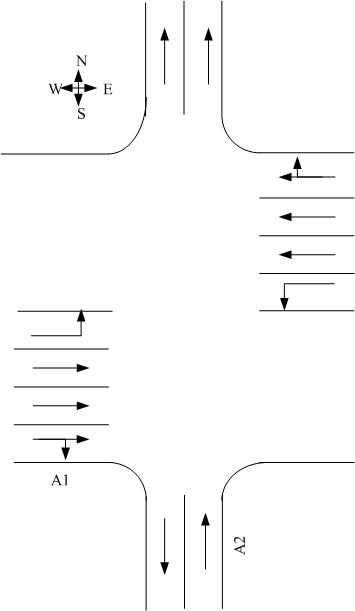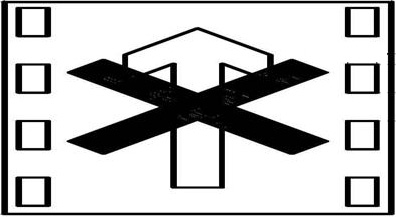Signal control method for variable lane
A signal control and variable technology, applied in the control of traffic signals and other directions, can solve problems such as road congestion and uneven lane utilization, and achieve the effects of reducing delays, improving traffic capacity, and reducing parking queues.
- Summary
- Abstract
- Description
- Claims
- Application Information
AI Technical Summary
Problems solved by technology
Method used
Image
Examples
Embodiment Construction
[0040] The preferred embodiments of the present invention are given below in conjunction with the accompanying drawings to describe the technical solution of the present invention in detail.
[0041] Targeted at figure 1 The intersection of the one-way and two-way traffic roads shown and the vehicle flow shown in Table 1 can use variable lanes, so that during the traffic peak, the straight line at the south entrance and the left turn at the west entrance at the intersection of A1 and A2 are eliminated. The phenomenon of secondary queuing exists, which reduces the queuing time of vehicles and improves the traffic efficiency at the intersection of A1 and A2.
[0042] Therefore, the signal control method for variable lanes of the present invention solves the problem of vehicle queuing at intersections A1 and A2 by utilizing the two aspects of variable lanes and traffic signal distribution, and improves traffic efficiency.
[0043]Among them, in terms of utilizing variable lanes,...
PUM
 Login to View More
Login to View More Abstract
Description
Claims
Application Information
 Login to View More
Login to View More - R&D
- Intellectual Property
- Life Sciences
- Materials
- Tech Scout
- Unparalleled Data Quality
- Higher Quality Content
- 60% Fewer Hallucinations
Browse by: Latest US Patents, China's latest patents, Technical Efficacy Thesaurus, Application Domain, Technology Topic, Popular Technical Reports.
© 2025 PatSnap. All rights reserved.Legal|Privacy policy|Modern Slavery Act Transparency Statement|Sitemap|About US| Contact US: help@patsnap.com



